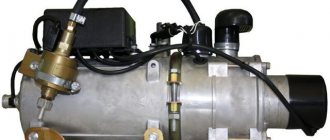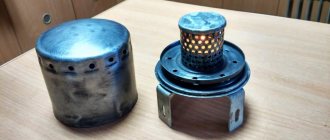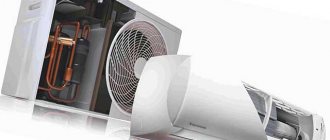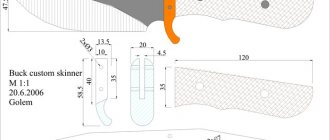How to make a homemade muffler for a car - technological manual
Increasingly, you can find a homemade muffler . In reality, making a high-quality muffler for yourself is not that difficult. Moreover, the production of homemade jammers is beginning to acquire mass proportions. There are quite logical explanations for this phenomenon:
- firstly, exhaust system elements, especially domestic ones, produced in series, as a rule, have a short service life;
- secondly, original spare parts for foreign cars and high-quality domestic parts are very expensive, in addition, no one is immune from counterfeiting;
- thirdly, craftsmen in the garage can create a technical “masterpiece” from improvised means, which in terms of performance characteristics will not be inferior to the best production models.
Making a muffler with your own hands - stage one
Before you begin work on making your own model of muffler, you should thoroughly prepare so as not to be distracted in the midst of the process. Everything you need can be found in almost any garage. The main element of the muffler that suffers the most is its body (tank). The thickness of the metal used is too small to withstand repeated overheating, vibration, exposure to moisture and combustion products.
The first step is to find material for the muffler. Practice shows that the best option is the body of an old powder fire extinguisher. The most compact models are metal flasks with a diameter of 100-150 mm, and the body weight will not exceed 3 kg.
The fire extinguisher body has the following advantages:
- Dimensions allow it to be used without modification;
- thick steel will last a long time without destruction, since the body was originally designed to work under high pressure;
- The cone-shaped fire extinguisher neck has thickened metal and requires only minimal alteration.
Fire extinguishers have a limited shelf life, after which or after use, they are written off. Finding one won't be difficult. Carbon dioxide fire extinguishers cannot be used to make mufflers with your own hands, since the smallest model weighs 5 kg. In addition to the body, two pieces of seamless steel pipe with a diameter of about 30 mm are required. The length of the segments is selected in each specific case separately.
A homemade muffler will only work if you have the following tools in your garage or workshop:
- welding machine (preferably semi-automatic);
- angle grinder (grinder) with cutting and cleaning discs;
- sandpaper of different grain sizes;
- paint brush;
- solvent or other solvent;
- heat-resistant paint (KO 811, KO 813 or their analogues);
- workbench with a vice;
- personal protective equipment: welder's mask, face shield, welding and work gloves, overalls, respirator.
Details on how to make a homemade muffler
The manufacturing process begins with dismantling the exhaust pipe. You will have to remove it in order to cut off the old muffler. Next, the pipe should be installed in place (without tightening the fasteners). This is necessary for further fittings. We will also borrow brackets from the old body, with which it is attached to the body, or we will make them anew. Drawings for a homemade muffler can be found in specialized literature, or it is better to draw up your own, based on the following conditions:
- the inlet pipe to the muffler is located along the body (enters the rear part of the fire extinguisher), offset from the center to the side wall and immersed inside 2/3 of the length of the body;
- The outlet pipe from the muffler is located along the axis of the body (the upper part of the fire extinguisher) and is also immersed inside 2/3 of the length of the body.
Thus, inside the housing, the pipe cuts overlap each other, but do not collide due to axial displacement. Before direct assembly, it is necessary to refine the workpieces:
- the fire extinguisher is emptied, the shut-off valve is unscrewed from it;
- using a grinder and welding machine, a hole corresponding to the diameter of the pipe is made in the upper part;
- the same hole is made in the bottom of the fire extinguisher body, but shifted towards the wall of the body;
- in the body of the pipe sections that are placed inside the body, cuts are made with a grinder disk in a checkerboard pattern (20-30 pieces each). You can drill holes, but this will require a drill press.
After this, you can proceed to the first fitting. The body of the future muffler is suspended in its regular place, first secured with improvised means (the fire extinguisher is positioned bottom forward of the car). Pipe sections are inserted into the holes. Next, the housing must be rotated until the inlet hole has the most convenient coincidence with the standard pipe.
About direct flow or PG
A direct-flow muffler (PG) is an improved alternative to a stock exhaust, which is not capable of ensuring a quick and timely release of gases from the engine system (ICE). The standard exhaust system especially suffers (chokes) after installing a sports camshaft or after boring the cylinder head cylinders (in other words, on a forced engine).
A straight-through muffler is designed to improve the exhaust system
The GHG is designed to modernize the exhaust system, which increases gas emissions. In addition, a correctly installed PG will provide an increase in internal combustion engine power by 10–15 hp. However, you need to be prepared for drastic changes: everything will need to be replaced, from the catalyst to the tip.
Increasing the power of a power unit using a PG, unfortunately, also has a “other side of the coin”, associated primarily with a loud sound attack of about 120 dB. This is the norm for sports cars, but hardly for civilian ones. And this explains the mass of cases of fines issued by law enforcement inspectors to the owners of such cars.
To minimize this modernization flaw, craftsmen use various methods to reduce sound. Installing a flute muffler, oval or round resonator are all types of methods to improve the performance of a forward flow muffler. “Form and content” can make it quiet.
For example, craftsmen say that a square resonator installed in the middle of the path (the path for gases to escape into the aircraft) reduces noise much better than an oval or round one. And in general, it’s better not to use a round one, but to use an oval one as a last resort, since it has a larger volume of cans and, accordingly, a quieter sound.
Oval resonators from Volvo S60R and Saab have proven themselves to be quite good.
Before thoroughly understanding what GHG is, you should remember the functioning of the vehicle exhaust system. Many motorists do not even suspect how many tasks it performs, although it does not seem so at first glance.
The forward flow kit is a ready-made option for tuning
Of course, the main task of the exhaust is to remove gases. But an equally important function is to ensure timely and high-quality ventilation of the internal combustion engine cylinders.
Ventilation of the cylinders is carried out as follows. When the valves of one cylinder of the internal combustion engine are closed, a vacuum is created in the exhaust manifold. It moves through the system at high speed, and, having been reflected from obstacles, returns to the collector. At the moment the gases leave the cylinder, a reduced pressure is created here, which promotes better ventilation and purge.
Among other things, the exhaust system (ES) is designed to combat noise. This is what the muffler is designed for.
Compared to a conventional standard muffler, the PG does not have many separate sections inside. Accordingly, it has a more simplified design. It is this fact that allows craftsmen to make it at home or in the garage.
But is it even worth it for an ordinary motorist to change the standard muffler to a PG one? Certainly not. If he does not prefer active driving, does not intend to use the car for sporting purposes, does not have complexes about a “gray” car that does not stand out from the general traffic flow, then he should not carry out modernization.
On the contrary, if the bassy and thoroughbred roar of the engine resonates in the soul of the car enthusiast, then the installation of direct flow must be carried out. Moreover, this gives many advantages of the following nature:
- the power of the internal combustion engine increases due to increased throughput;
- The service life of the entire aircraft is extended due to the use of high-quality materials.
As for the disadvantages of modernization, these are:
- problems with the law due to loud noise (can be excluded if the installation of GHGs is carried out using a new system);
- possible difficulties with service maintenance;
- greater sensitivity of the power unit to low temperatures;
- decreased clearance.
Do not confuse forward flow with a muffler. The fact is that the entire exhaust system is called direct flow, and in most cases only part of it is subject to modernization - the muffler.
GAZ 31 PatroN › Logbook › Making a muffler from... a fire extinguisher?!
Hello my subscribers and simply visitors to the Drive2.ru website. Today I present for your consideration a description of the technology for manufacturing a homemade muffler. About two years ago, while removing an old muffler that had burnt out and was already rusty in places, I thought how nice it would be if the muffler was stronger in terms of wear and tear, set it and forget it style. On the Internet, visiting motorist forums, looking through a bunch of information, I came to the conclusion: build a muffler from thicker steel or stainless steel. Since with stainless steel there is more steaming during the manufacturing process, it was decided to build from steel and the choice fell on the body of the used OP-4 powder fire extinguisher, the size was just right in terms of dimensions.
We take a used fire extinguisher, press the lever, thereby checking the absence of pressure or bleed off the residual pressure, unscrew the valve from the fire extinguisher body and rinse the inside of the body thoroughly with water. Work must be carried out strictly outdoors, as the powder inside is finely dispersed and chemically active. Cleaning work must be done strictly with rubber gloves and safety glasses (safety precautions have not yet been canceled). Then we take two sections of a steel water pipe with a diameter of about 40 mm and the length of a fire extinguisher body, and stepping back 100 mm from the edge of the pipe, using a drill of about 10 mm in a checkerboard pattern, we drill rows of holes, thereby turning a regular pipe into a perforated pipe. After our blanks are ready, in the center of the fire extinguisher, where the threaded connection from the valve remains, we mark a circle with a diameter equal to the diameter of our perforated pipe and with an ordinary drill of about 5-6 mm, we drill holes around the perimeter of the circle and thereby “drill out” the required diameter for the pipe. We insert one piece of pipe into this hole to a depth such that the end of the pipe remains outside, from which 100 mm were retreated when the perforation was made and this end protruded about 70 mm and we welded it. From the other end of the fire extinguisher, we move away from the center about 50 mm and also drill a hole with a diameter of 40 mm, insert another piece of pipe and, by analogy, mount and weld.
Next, we cut off the section of pipe from the old silencer where it connects to the exhaust line and weld this type of adapter onto one of the ends of our pipe. We try on our muffler in place and weld to it the mount for hanging the muffler to the car body, having previously cut off this mount from the old muffler. We weld any round or profile pipe to the other end of the pipe (for example, like mine) and, in principle, our improvised muffler is ready. We fix it, start the car and enjoy the new exhaust. It is advisable to paint everything with heat-resistant paint (I will also paint it later). Let's like who liked this article.
Homemade muffler with a pleasant sound
I don’t know how it is now, but many people used to know that an old car fire extinguisher is an excellent preparation for direct flow.
The story is simple: what I didn’t do with the original muffler can on the pita was of little use. I changed the muffler stuffing, made a flute like a Yamaha one, but still the sound was disgusting, rattling and loud, in general - a barrel organ.
It is possible to install a full-fledged direct flow from the pit, but you need to shorten it, digest the fasteners, but you understand: there was no particular desire to buy a barrel for 5 rubles and still digest it all, but the desire to get rid of the original muffler still did not leave.
And so back to the fire extinguisher. One was lying gathering dust in the garage a long time ago, but to make a direct flow you need two... And so, one fine May morning, on a small river, among the snags on the surface, the desired second fire extinguisher was spotted. Exactly the same as the first one, and now there were two of them. Well, you yourself understand what this led to.
In general, let's go)))
We take the most attractive tool in the garage, affectionately called “Binder,” and saw the bottoms of the fire extinguishers evenly.
Next, take a forty pipe, cut the gas distribution slots with a grinder, or, if you’re not too lazy, drill a billion holes. Then we weld one end of the pipe to the part of the muffler where the outlet will be.
You don’t even need to do anything with the outlet hole: the mounting location for the fire extinguisher spray is just perfect and the diameter is just right.
Now we stomp into the kitchen and tear open the casing of the ZIL refrigerator, tearing out the glass wool from there. Just wear thick clothing and gloves when working with glass wool, otherwise you will itch for two days, and if during these two days you want to relieve yourself, then... yes, it will itch there too... In general, we take glass wool and stuff the outlet part of the jar as tightly as possible.
Then we proceed to the entrance part. The thread in it needs to be cut so that the magpie pipe passes through, and, of course, we also fill it with glass wool, the denser the better.
Well, well, the only thing left to do is weld both parts together and weld the pipe to fit it with the standard muffler.
I didn’t bother with the fastenings to the frame, and why should I? I made two points of attachment to the luggage frames (it couldn’t be stronger): this fastening withstood a revolution on the asphalt and the can became a junk)))
The end of the jar is at your own discretion. I made pipes of a smaller diameter, and it looks quite good)
The sound, let me tell you, turned out surprisingly great! Even though it’s forward flow! At idle you can’t hear it at all, even the electronics are louder, but when driving it’s just the most beautiful sound - a soft growl without a dull metallic rumble and yelling.
Well, here’s the final look) The plastic doesn’t burn, the sound is pleasant, nothing was done to the original pipe. What else does?)))
How to make a muffler from a fire extinguisher
The most persistent problems of car parts are high price and poor quality. The first option is only possible if you try to save money, but the second option is that if you want to get a quality product, you will have to pay an amount that not everyone can afford. There is another, less expensive and more effective way - to create the part yourself. We will tell you how to make a muffler with your own hands.
Step-by-step manufacturing instructions
Before you make a muffler for your car yourself, take care of two important things that are best ordered from a turner: end caps and baffles. The rest will be easy for you to handle on your own.
To make a muffler for a car and successfully install a homemade product, you need to follow the recommendations:
- Take measurements and form a jar assembly from a metal blank.
- Drill holes in the can pipes.
- Weld the pipes to the reflectors and baffles.
- Attach and secure the casing and end caps.
- Install fasteners.
- Fasten the finished part.
Making a muffler with your own hands
After installing a new exhaust device, the sound of the motor may change: become stronger or quieter, which depends on the quality of work.
Homemade muffler
Choosing the right material is very important when creating a quality part. You need to decide on a budget, then decide which segments to purchase. There are several options for self-assembling a muffler at home.
- Modification of the standard system
- System assembly from standard steel
- Stainless steel component assembly.
- Fire extinguisher. Empty and used will do.
- Two pipes with an approximate diameter of 32 millimeters, the exact length is determined by the car
- Electric welding machine
- Grinder, you also need a cutting wheel.
We do not recommend using very old mufflers. As a result of repeated heating and cooling, the metal loses its desired properties. Used parts that have worked for quite a long time have burnout spots and actively rusting places. Such material can only be recycled and cannot be reused. From a financial standpoint, upgrading a conventional muffler costs the same as any standard steel system. The more expensive method is a stainless steel system. This option can live up to 10 years.
What is required to build an ASG (direct-flow exhaust system): tuning kit
Undoubtedly, installing a PG is a tuning, a modernization. And everything you need to build such a sporty exhaust option is available in stores.
The first is the resonator. Note that the sports PG does not have partitions that prevent the escape of gases. Its entire design is aimed only at ridding the internal combustion engine of excess gases generated during fuel combustion. As a result, power increases due to increased airflow.
Interesting point. On cars equipped with a naturally aspirated internal combustion engine, installing a sports PG allows you to increase power by 10 percent of the standard power, and on turbocharged cars - by 20 percent or even more.
The second necessary element, of course, is a new direct-flow flame arrester. The universal damper is intended as an alternative to the standard catalyst when constructing a direct flow. Such an element must be made of stainless steel (there is an option of aluminized steel). The internal part of such a flame arrester has a universal design, designed to increase the power of the machine’s power unit.
The structure of the muffler in the form of a diagram gives a complete picture of it
Fastening elements and other accessories, which must include various adapters, adapters, flanges, thermal tape for the exhaust manifold, etc., are also part of the system.
And finally, the muffler pipe, made of stainless steel or aluminized. The pipe itself must have an increased diameter (usually in the range of 38–76 mm). The length of the pipe is about 1000 mm, the wall thickness is 1.5 mm.
How to make a muffler from a fire extinguisher with your own hands
Empty the fire extinguisher if it contains mixture. After this, remove the head and widen the central hole so that a 32 mm pipe fits in there. We recommend using the dimensions of the previous exhaust system as a guide. If you do not have this opportunity, you will have to measure the distance you need manually. Add 9-18 centimeters, then cut the fire extinguisher and make several partitions that will absorb vibration and sound by changing their direction.
Cut the fasteners from the old muffler and weld them to the new one for installation. All the operations described above are done using a grinder with a metal circle. All components will be ready, you must connect them into a single whole. You will need a welding machine.
The most important condition when performing welding work is absolute tightness. You can coat the muffler with protective paint for greater environmental protection, allowing you to use the part a little longer. You only need to paint if you use reliable materials. Otherwise, you will simply waste your money. This guide to creating a muffler is essentially universal; it can be used with any materials. At the end of the job, you should check the security of the seams. You can do this with regular water and a plug. Close one end and pour water into the other. This way you will notice even the smallest hole - water will pass through it. It is important to dry the part after this procedure by placing or hanging the muffler vertically. Wait a few hours.
The design and significance of the car exhaust system
The operating features of a car exhaust system are quite easy to understand for anyone who is interested in it. The essence of the exhaust is to remove gases from the combustion chamber of the engine. The opening exhaust valve allows masses of treated gases to enter the manifold.
Regardless of the type of engine, the gases after the intake pipe are sent to the catalyst, in which the purification process takes place under the influence of high temperatures. The amount of air and gasoline entering the cylinders is determined by a temperature sensor. After all this, the gases participate in the extinguishing process in the resonator and are then removed through the muffler to the outside.
The exhaust system of a car has the following elements:
- Manifold , which serves to remove already processed gases from the combustion chamber. Interesting fact: many motorists like to tune the manifold - an improved version can provide the cylinders with an increased amount of power and in this way increase the power of the car.
- Catalytic converter , which performs the work of a purifier, eliminates and burns gas components harmful to humans, providing them with less toxicity.
- Resonator responsible for significant expansion of processed gases. Because of this, the exhaust back pressure decreases and the shock wave weakens.
- The muffler is directly responsible for removing gases from the car. The sound produced during this action also depends on the quality of the muffler. There are three types - reflector, limiter and absorber. The names of the types reflect the advantageous functions of the muffler on the market.











